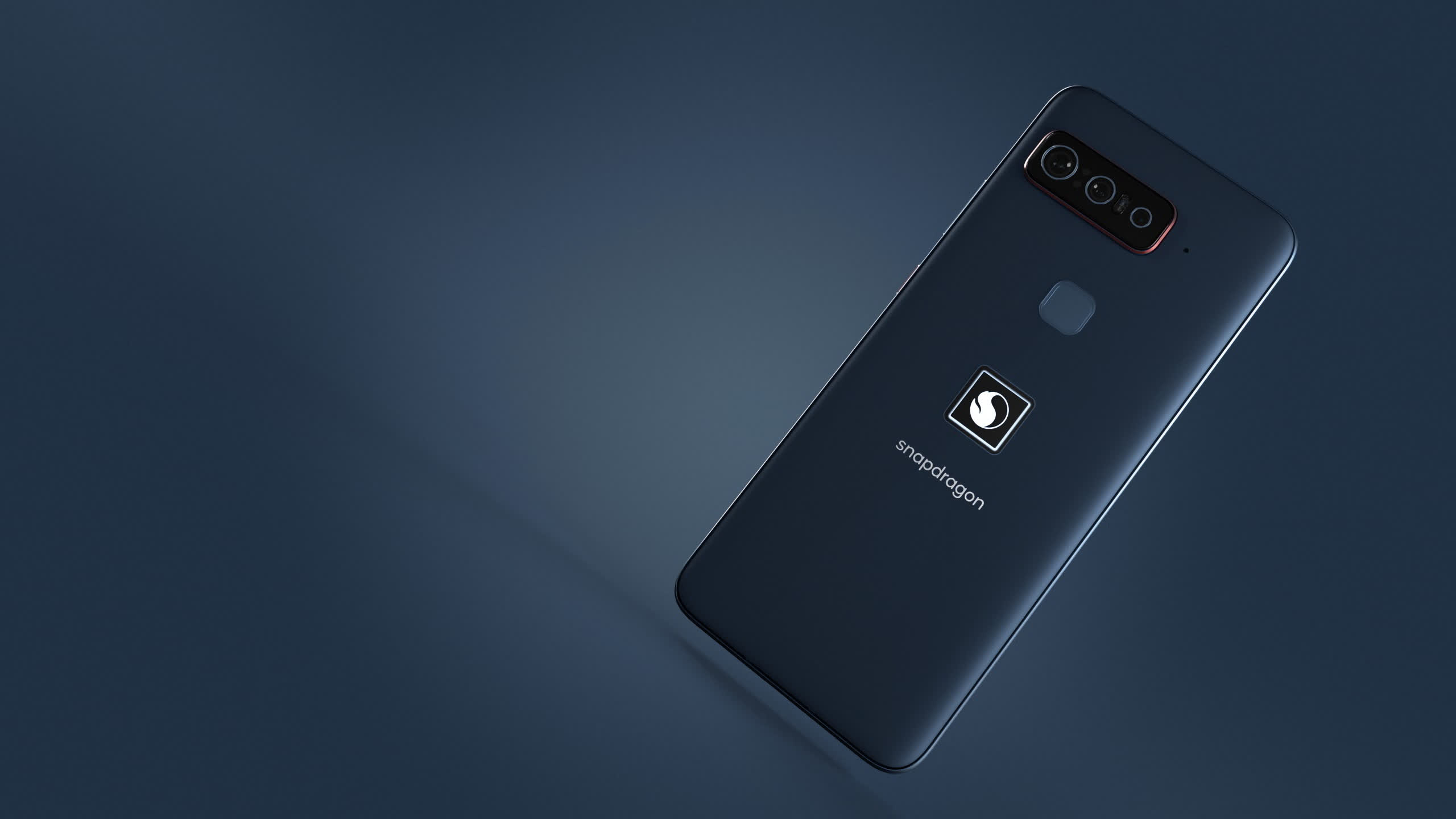The big picture: MediaTek overtook Qualcomm to become the leading supplier of smartphone chipsets last year. And now Qualcomm is reacting to and making an effort to regain some mindshare with consumers who are passionate about mobile hardware. Specifically, the company has built a phone for Snapdragon enthusiasts, but this is not a Pixel-type, aspirational device. Instead, it's an Asus phone designed to remind you that Snapdragon is still the chipset to beat in terms of performance and technological innovation.
Qualcomm launched Snapdragon Insiders earlier this year, a community for enthusiasts who love mobile technology and want to keep up with the latest innovations the company has to offer before it actually lands in various products. Then this week, the company unveiled the first smartphone for Snapdragon Insiders, which is a $1,500 piece of kit developed in collaboration with Asus.
Qualcomm VP of product marketing Mike Roberts says that "never before has such a complete Snapdragon experience been brought together in one single amazing device," but that's really up to the 1.6 million Snapdragon Insiders to decide.
The phone borrows many design cues from Asus phones like the ZenFone 8 and the ROG Phone 5, so this is mostly an Asus phone despite sporting the Snapdragon logo on the back. Oddly enough, it's powered by the Snapdragon 888 5G Mobile Platform, even though last month they released a ever slightly improved variant in the Snapdragon 888+.
On the flipside, the chipset is backed by plentiful 16 GB of LPDDR5 memory and 512 GB of storage. The screen is a Samsung-made 6.78-inch AMOLED display with a refresh rate of 144 Hz and a maximum brightness of 1,200 nits which meets the HDR10+ certification.

The top bezel hides a 24-megapixel selfie shooter and the camera module on the back includes a 64-megapixel main shooter, a 12-megapixel ultra wide, and an 8-megapixel telephoto lens with 3x optical zoom.
Qualcomm promises the camera module in combination with the the Spectra 580 Triple ISP is capable of producing "pro-quality" pictures and shooting video in up to 8K resolution at 30 fps. The phone is also the first to sport the Snapdragon Sound certification, which means it has the technology chain to ensure minimal Bluetooth latency, active noise cancellation, and offer support for high-resolution audio up to 24-bit 96 KHz.
Other notable features include support for Quick Charge 5.0, which means you can fill the 4,000 mAh battery to 70% in 30 minutes, or 100% in about an hour. On the software side you get the stock Android 11 experience, and Qualcomm is committing to four years of security updates (whether that's sufficient or not, we'll have to see in the long term).

The phone is accompanied by a pair of Master & Dynamic MW08 wireless earbuds that feature active noise cancellation, USB Type-C to USB Type-A and USB Type-C to USB Type-C cables, a 65-watt charging brick, and a custom rubber bumper.
If you've made it so far, you're probably wondering what's so special about this device. The obvious answer is not a lot, as Qualcomm itself admitted it's not trying to compete with OEMs, despite this being an obvious attempt at reminding many of you that Snapdragon is at the heart of your phone and that it's capable of many things.
When you look at Microsoft and Google, they've also created aspirational device lineups in the form of Surface and Pixel hardware, but they also have the luxury of owning two popular operating systems. Qualcomm isn't in the same position, so it must tread lightly if it wants to avoid sending its OEM partners to the competition – Samsung, MediaTek, or even Huawei's HiSilicon. At the same time, this has resulted in an expensive phone that doesn't have much in the way of distinguishing or novel features when compared to current flagships.
For people who are interested in the Snapdragon phone, it will be available on the Asus online store and at several retailers starting next month. Availability is expected to be limited at launch, so even if you're a Snapdragon Insider willing to buy the phone, you'll only be able to do so if you're in the US, UK, South Korea, or Japan.